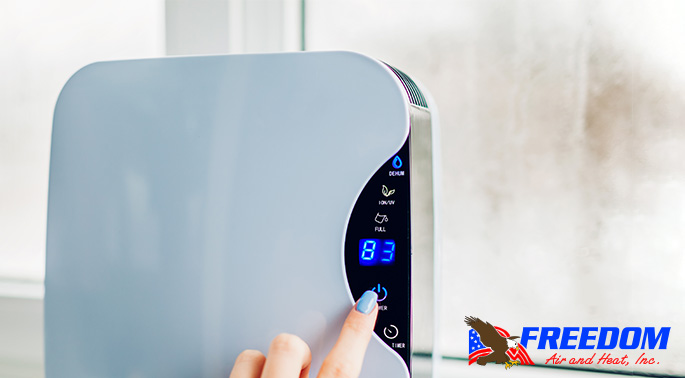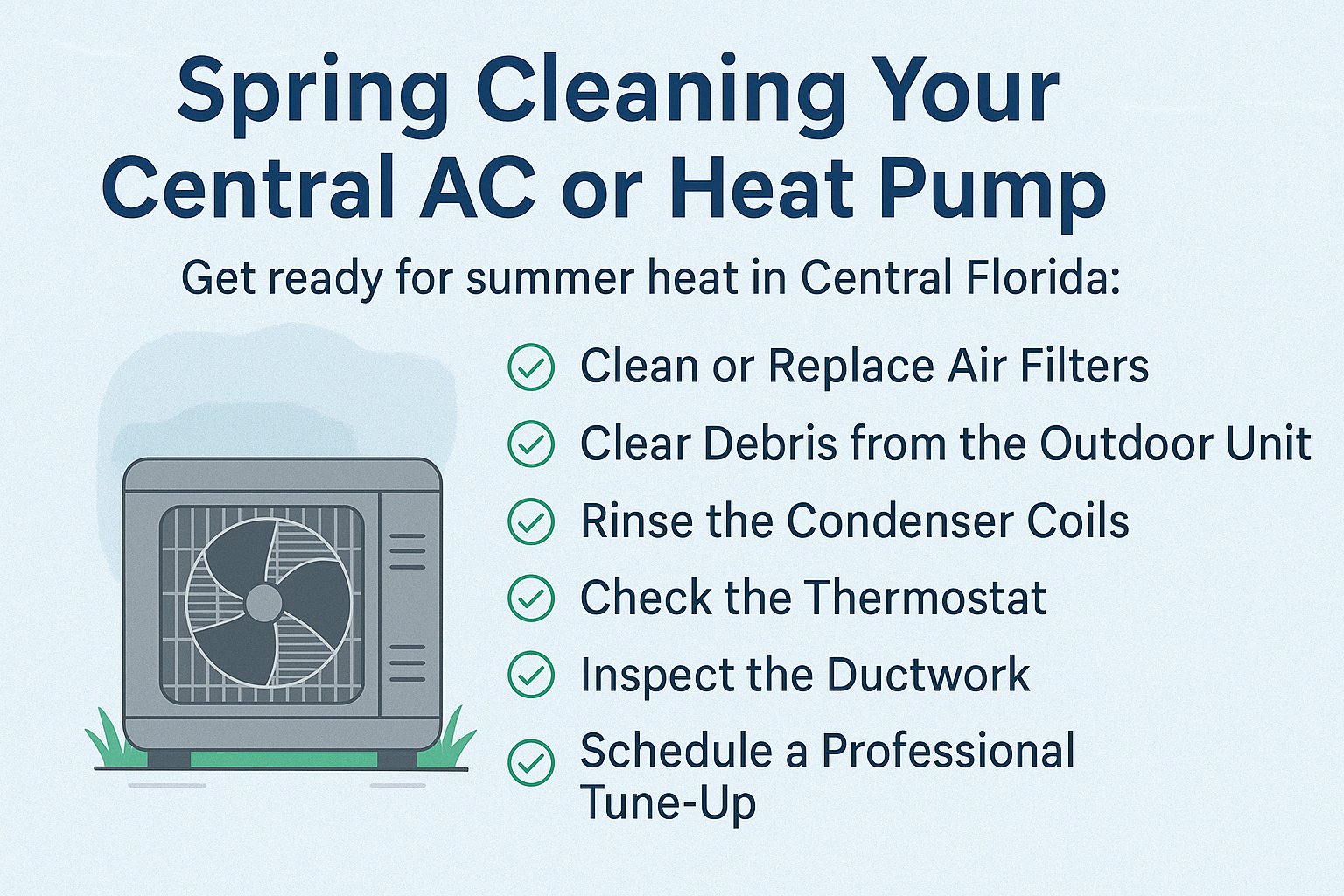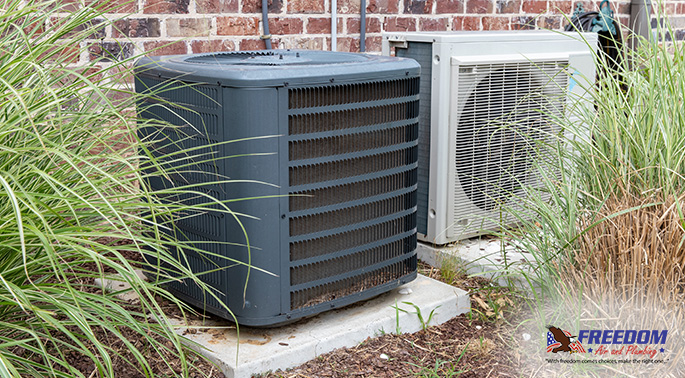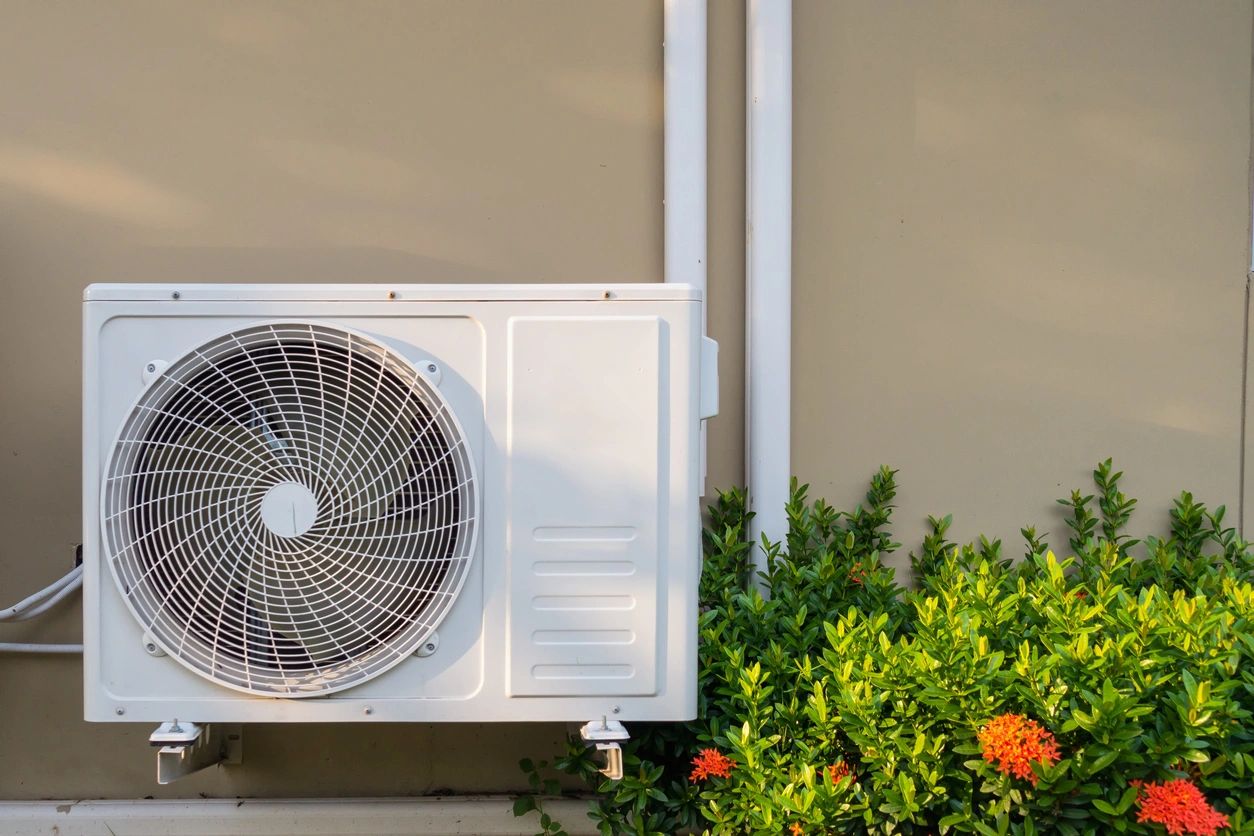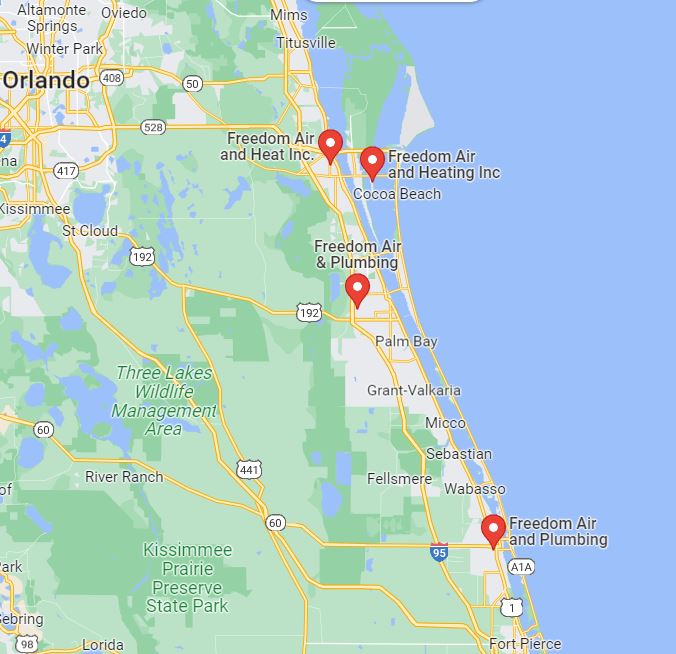In many ways, the humidity of Florida summers can make the outdoors feel like hell on Earth! However, this heat can become even more unbearable when the inside of your home is saturated with the same extreme moisture. Are you in the throes of battling indoor humidity in your home? Well, the team at Freedom Air and Heat is here to tell you how to dehumidify your home this summer!
Natural Solutions:
Before diving into a laundry list of expensive dehumidifiers or time-consuming whole-home system installations, we want to tell you how to dehumidify your home with some natural methods. Here are some of the simplest and most cost-effective solutions:
1. Use the Calcium Chloride Method
First on our list of natural solutions is placing pots of calcium chloride in different areas of your home. Because this powdered chemical has hygroscopic properties, it attracts water molecules. Therefore, placing pots of this powder in humid areas of your home can effectively remove moisture from the surrounding air, providing you with instant relief from humidity. Moreover, since most hardware stores keep calcium chloride in stock, this is typically an easy product to find.
2. Replace Your Plants
Secondly, if you have any indoor plants, such as sansevieria plants, rubber plants, chamaecyparis evergreen plants, kalanchoe plants, or cissus ivy plants, they could be adding to your humidity problems. Not only can replacing these with different plants reduce humidity levels, but some plant types can purify your air, as well! As an alternative to your current plants, consider replacing them with the following varieties:
Dehumidify Your Air with the Following Plants:
-
Citrus Limon Plants
Not only do these plants fill the room with a delightful, lemony-fresh aroma when they flower, but they absorb a lot of excess moisture in the air. If you choose to invest in some citrus limon plants, ensure they have access to direct sunlight, water them regularly, and plant them in dry soil.
-
Myrtus Plants
Commonly known as myrtles, these flowering plants not only restore balance to your home’s climate, but release phytoncides from their leaves and flowers that kill microbes in the air. As indoor plants, myrtle topiaries are a fantastic option, if you can stay diligent in watering them.
-
Laurus Nobilis Plants
Another fantastic moisture-absorbing plant is the Laurus nobilis, which is an evergreen tree or shrub. Once it flowers, this plant gives off a fresh aroma, and is extremely effective at absorbing excess moisture from the air. In order for this plant to thrive indoors, you must water it daily with lukewarm water and keep it in a shaded area, away from direct sunlight.
-
Spathiphyllum Plants
As one of the most popular house plants in this genus, peace lilies are ideal for absorbing moisture from your home’s air. In addition to helping stabilize your home’s humidity levels, Spathiphyllum plants can destroy mold spores. For the most conducive environment for this type of plant, be sure the temperature is around 65-70 degrees.
-
Coffea Plants
Although the Coffea Arabica and Coffea Canephora plants are the most known species due to the coffee beans they produce, many varieties are also fantastic at dehumidifying indoor spaces. In addition to the delicious tropical aroma they give off when they flower, coffea plants thrive in humid climates, soaking up a lot of excess moisture from the air. Moreover, because they prefer shade, these plants thrive indoors, as long as you keep up with watering them.
Purify Your Air with the Following Plants:
-
Aloe Vera Plants
As one of the most popular types of succulents, aloe vera plants can do wonders for your indoor air. Not only can aloe vera plants remove formaldehyde from your air, but the leaves of this plant contain a natural soothing gel that can be used as an anti-inflammatory to help soothe cuts or burns. Consequently, this can be a handy house plant to keep in your kitchen.
If you plan to keep aloe vera plants in your home, we recommend watering them every 7-14 days, allowing the water to thoroughly drain out before adding more. Also, these plants require a good deal of sunlight to thrive, so be sure to place them near a window.
-
Snake Plants
With the ability to remove a multitude of different pollutants from the air, snake plants are purification superheroes. This is because they can eliminate benzene (used in detergents, insecticides, and motor fuel), trichloroethylene (found in disinfectants, perfumes, dyes, and soaps), and formaldehyde (found in common beauty products, plywood, and dryer sheets) from your air. Furthermore, these plants are incredibly tolerant of all types of environments, making them easy to maintain.
-
Peace Lilies
Another super-plant for air purification is the Peace Lily. In addition to removing formaldehyde, benzene, and trichloroethylene, peace lilies can remove ammonia from your air. Because ammonia is a chemical that is used in many common cleaning products, fertilizers, plastics, pharmaceuticals, and as an anti-fungal agent in foods, keeping it out of our air is an important priority. In addition to effectively removing these harmful chemicals, peace lilies release a heavenly fragrance when they flower throughout the summer months. In order to ensure their survival indoors, you should keep peace lilies in shady areas of your home.
-
Bamboo Plants
As a visually versatile plant, the foliage of bamboo plants can range from bold greens to golden hues. Because indoor varieties thrive in humid climates, bamboo plants can be an ideal solution for high levels of humidity in your home. For an indoor bamboo plant with the easiest maintenance, look for Lucky Bamboo plants. Not only can these plants purify your air, but are an integral aspect of traditional Feng Shui, as they are believed to bring good luck and fortune.
As a purifying house plant, bamboo plants remove benzene, formaldehyde, carbon monoxide, and trichloroethylene from the air. Growing up to twelve feet high in full sunlight or bright light, bamboo plants are aesthetically-pleasing super plants to keep in your home.
-
Garden Mums
Widely known by their full name of Chrysanthemums, garden mums are an easy-to-maintain indoor plant. Requiring little beyond moderate light, water, good drainage holes and fresh houseplant soil, garden mums are usually ready for indoor growth at purchase. As a natural air purifier, garden mums remove ammonia, benzene, formaldehyde, and xylene, which is a chemical found in cigarette smoke, plastics, rubber, paints, and lacquers.
-
Spider Plants
Another purifying plant to look for is a Spider Plant. Not only are these easy to grow and maintain, but they remove formaldehyde and xylene from the air. For optimal growth, spider plants require bright, indirect sunlight.
-
Dracaena Plants
Last on our list of purifying house plants is the Dracaena plant. Offering over forty varieties, this plant comes in many shapes and sizes, and effectively removes benzene, xylene, formaldehyde, and trichloroethylene from the air. However, these plants are toxic to cats and dogs, so if you still choose to grow these plants in your home, keep them out of reach from four-legged family members.
3. Use Exhaust Fans
Third on our list of natural methods to reduce humidity is using your exhaust fans. Especially during and after showering or bathing, and while you cook, run these fans to keep your home ventilated.
4. Absorb Moisture with Baking Soda or Rock Salt
Another natural option for dehumidifying your home this summer is soaking up excess moisture with baking soda or rock salt. For the baking soda method, pour the baking soda into bowls and cover each bowl with a thin cloth. Then, place them in the most humid rooms of your home, replacing them with fresh baking soda when it starts to cake.
In order to dehumidify your home with rock salt, you’ll need to provide a container for the absorbed moisture to pool. Therefore, you’ll need to put the rock salt in a bucket with drilled holes, and place that bucket inside another in-tact bucket to catch the moisture run-off as it’s absorbed by the salt. Because of the moisture run-off, you should check each bucket at least once a week, pouring out the collected water at the bottom of the bucket and adding fresh rock salt for continued effectiveness.
5. Improve Airflow/Ventilation
As one of the simplest solutions to naturally dehumidify your home, you can open doors and windows to circulate air. In conjunction with this method, you can place fans in the most humid areas of your home to keep the air moving. Also, you can install extraction fans in high-humidity areas of your home, like the kitchen, attic, and bathrooms.
Useful Dehumidifying Devices
Now that you know about some natural dehumidification methods, we have some devices and home systems that can be effective. Depending upon your needs, you can choose between portable dehumidifiers or installing a whole-home system. To help you explore both options, here are some of the top-rated devices on the market:
Portable Dehumidifiers
If you need to dehumidify specific rooms or areas of your home, a portable dehumidifier is your best solution. With a large variety of portable options on the market, here are some models to consider:
-
Frigidaire 70-Pint or 30-Pint Dehumidifier
Voted the two best overall portable dehumidifiers of 2019, these two Frigidaire Dehumidifiers not only remove excess moisture from the air but prevent mold and mildew from growing. Another convenient feature of these Energy Star-certified models is the ability to connect to a drain. With this option, you can keep it continuously running without having to manually empty the water tank.
-
Black + Decker 70-Pint with Built-in Pump
As 2019’s highest-rated portable option with a pump, the Black + Decker 70-Pint Dehumidifier offers effective removal of excess moisture and convenience. Through a built-in pump, the 70 pints of water it removes daily is drained to an external receptacle. Additionally, this model boasts 3 fan speeds and an adjustable thermostat with an easy-to-read digital display.
-
Eva-Dry Petite Dehumidifier
If you’re looking for a smaller option for areas such as closets, laundry rooms, or an office, the Eva-Dry Petite Dehumidifier was voted the best small portable dehumidifier of 2019. Removing up to 8 ounces of moisture from the air daily, this unit is an effective option for small rooms. In addition to its convenient size, this dehumidifier produces very little noise, has a full-tank indicator, and an automatic shutoff. Consequently, you don’t need to constantly check the reservoir for an overflow.
-
hOmeLabs 4,000 Sq. Ft. 70-Pint Dehumidifier
As the 2019 best portable option for basement humidity, the hOmeLabs 4,000 Sq. Ft. 70-Pint Dehumidifier can handle rooms up to 4,000 square feet in size. Pulling up to 70 pints of water from the air daily, this dehumidifier can continuously drain through a hose. Other benefits of this dehumidifier are its quiet fan and its Energy Star certification, so your utility bills won’t spike. Also, reviewers appreciate this dehumidifier’s ability to prevent mold and mildew growth in basements.
-
Tosot 30-Pint 1,500 Sq. Ft. Dehumidifier
For 2019’s highest-rated option for your bedroom, the Tosot 30-Pint 1,500 Sq. Ft. Dehumidifier is an Energy Star-certified unit that is virtually noiseless. Ideal for spaces up to 1,500 square feet, this unit can continuously drain when hooked up to a hose. Furthermore, this unit can automatically restart itself in the event of a power outage.
-
Tenergy Sorbi 1,000ml Dehumidifier
If your priority is dehumidifying your bathroom, consider purchasing 2019’s highest-rated dehumidifier for bathrooms, the Tenergy Sorbi 1,000ml Dehumidifier. Because this model dehumidifies and purifies the air, removing 99.97% of particles with a HEPA filter, it’s ideal for bathrooms. Operating at a quiet frequency of 35 to 42 decibels, and removing 1.6 pints of water daily, this dehumidifier is perfect for smaller spaces. Also, this dehumidifier includes an LED indicator that tells you when to empty the 1-liter tank, making maintenance easy.
Whole-Home Dehumidifiers
If your indoor humidity problems exist throughout your entire house, you should explore some whole-home systems. In choosing a whole-home system, you’ll need to decide between ducted and non-ducted options. To help you narrow the search, here are some top-rated models of both varieties to consider:
-
Aprilaire Ductable
First on our list of the top whole-home dehumidifiers is the Aprilaire Ductable System. As the least expensive option, this whole-home dehumidifier is ideal for small, well-sealed homes. In addition to its attractive price-point, this system can operate as a ducted or free-standing unit. Furthermore, you can be easily integrate it with your HVAC system to dehumidify air throughout your house. Pulling up to 65 pints of water from the air daily, this unit effectively distributes dry air throughout your home. Simply put, if you’re looking to dehumidify a space under 3,000 square feet, this is the whole-home system for you!
-
Aprilaire 1850 F Non-Ducted
As a second option for dehumidifying small to midsize homes with no central ducting, the Aprilaire 1850 F Non-Ducted model is a great whole-home system to consider. Slightly mightier than its standard counterpart, this unit removes up to 95 pints of moisture from the air per day. Also, with its wide front grille, this model is extremely effective at circulating the air. Especially if your HVAC system draws from the basement, this unit can improve the air supply for your entire home.
-
Honeywell
For the most powerful HVAC model, you can opt for this Honeywell whole-home dehumidifying system. With its Energy Star-certification, this unit is a great dehumidifying option for spaces 3,000 to 4,000 square feet. Also, this unit mixes in fresh air, rather than recycling the same stale basement air like most other models. Consequently, this Honeywell system is a much healthier option for your indoor air.
-
Ebac
If you live in an older house with moisture problems that originate from a crawlspace, the Ebac whole-home system is an option to consider. Made of heavy-gauge steel, an Ebac system can tackle anything from construction sites to pipe galleries. Because of its capacity to handle tougher areas, this is an industrial-grade option. Although this is essentially a portable device, its industrial-strength quality makes it an effective option for whole-home dehumidification. While this unit only covers up to 1,000 square feet, the lower coverage isn’t an issue for dehumidifying a small crawlspace area.
-
Burcam F80210
Another whole-home option to consider is the Burcam F80210 Dehumidifier. Great for climate balance, this system draws drier air from upper levels and directs it to lower levels. As an energy-efficient option, this system requires less power than a 60-Watt light bulb.
-
Delonghi DD45 PE
Capable of handling spaces up to 2,000 square feet, the Delonghi DD45 PE Dehumidifier is a whole-home system that can remove up to 45 pints of moisture each day. Although the reservoir tank only holds up to 12 pints, the built-in pump and sixteen-foot hose included with this unit offset the lower capacity rating. In fact, with the ability to continuously drain on its own, you never have to worry about the reservoir becoming too full.
How to Dehumidify Your Home Like A Pro
With all the available methods to dehumidify your home, choosing the perfect solution is easy with the help of the right team. If you’re looking for trustworthy experts to guide you toward the best solution, look no further than Freedom Air and Heat! For the most professional HVAC service, call us today at 321-631-6886 or fill out a service request form on our website!

